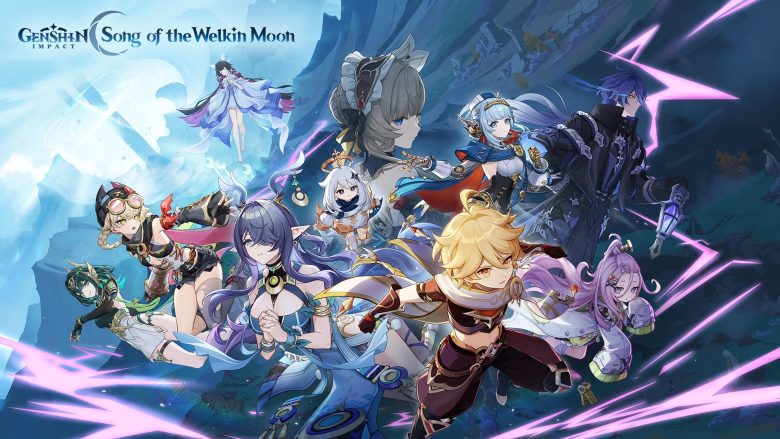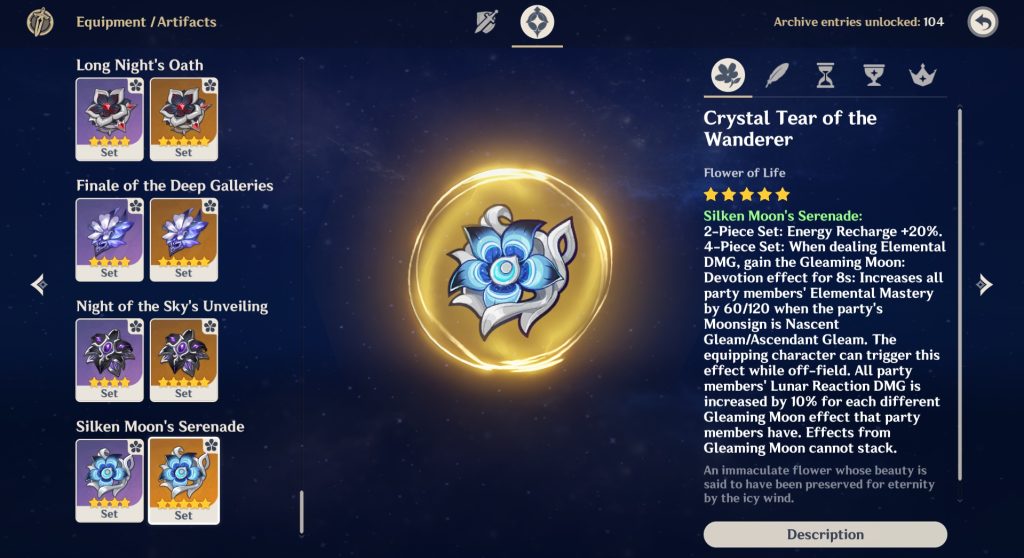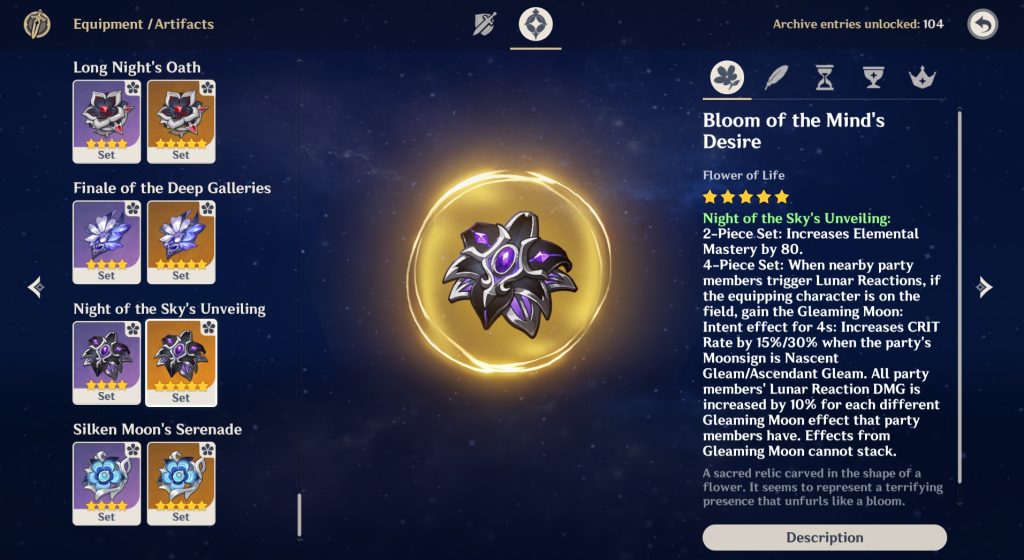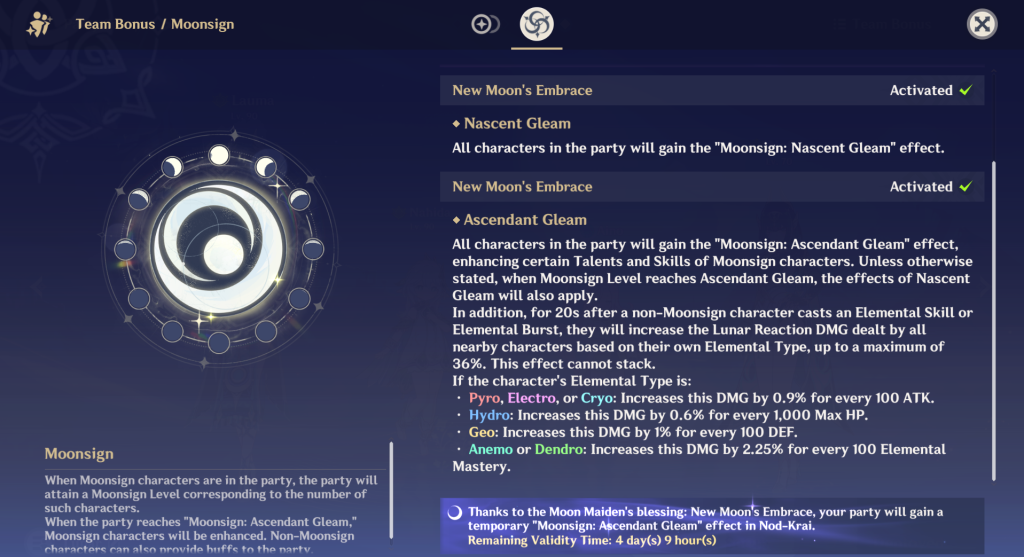Almost two months ago, Genshin Impact entered a new era. Gone are the mountains and Saurians of Natlan and its hot weather, instead, the Travelers are setting out to the snowy Nod-Krai, swapping the primordial power of Phlogiston for… the primordial power of the moon?
Before diving into everything Song of the Welkin Moon has to offer, let’s take a quick look at Natlan, the most widespread complaints, and how Genshin has gotten to them – and what has changed in Nod-Krai.
Ever since Sumeru, Genshin tried to make world exploration more exciting and unique between the different nations. In addition to the usual Seelies, chests, and the elemental Oculus of the region, the land of Wisdom also received various Dendro-related puzzles and the means of quick traversal.
Fontaine took it a step further by introducing diving & underwater exploration as well as the Arkhe, Pneuma and Ousia, which had an impact both on exploration and combat. Certain bosses and even regular Fontaine mobs, such as Clockwork Meka, could be shut down by using the appropriate Arkhe. Each Fontaine character and the Hydro Traveler have an innate Arkhe alignment, while Furina can switch between the two.
Fontaine was sitting right on the fence in terms of Pneuma and Ousia. On the one hand, it didn’t matter much during the exploration, the regular mobs and even the bosses would die too fast for it to matter. The puzzles always had balls of Arkhe nearby, which allowed you to skip using Fontaine characters – or pulling for them. On the other hand, this mechanic also made its way into the Abyss, and using the correct characters would make battles much easier– but still not impossible without.
Naturally, Natlan had to take it one step further. Enter: Phlogiston and Nightsoul mechanics (points/Blessing/Transmission). The developers seemingly wanted a system that would do all that Sumeru’s Dendrogranum and Fontaine’s Arkhe could, and more on top of it. But more is not always better, especially considering Nightsoul’s increased influence on exploration and battle.
Want to swing through the air like you did in Sumeru? You can, just need to indwell a Yumkasaurs. Run up the walls? Teletlisaurus. No more diving, but you can splash across the waters of Natlan as a Koholasaurus, jumping up to a great height and traversing the Spiritways. Other abilities include smashing through walls, transporting items and straight up flying.
Or you could pull a character from the respective Natlan tribe and do all that without having to indwell a Saurian. And the Nightsoul Transmission system that allowed you to smoothly switch between multiple Natlan characters would make it all the more pleasant. Say, in a party of Chasca, Mavuika and Ororon you would pretty much never have to land.
Admittedly, Natlan is the only region in the game that I have not explored fully in search of sweet, sweet Primogems. While there are Saurians and the indwelling interactive items strategically scattered around the map, Natlan was simply not fun to explore unless you had these heroes on hand. Frequently you would find yourself in front of a puzzle or a Spiritway or some other Natlan specialty, and have to pause what you’re doing to look around for a Saurian to Indwell.
This system became not only more important for exploration, but also for combat. Natlan introduced a couple of powerful sets of Artifacts that are usable only on its own characters: Obsidian Codex for the Nightsoul-using DPS characters that gives 15% increase to damage dealt in Nightsoul Blessing state and 40% Critical Rate; And the Natlan support-aimed Scroll… which is better simply add as a screenshot to avoid writing out all of its effects. It made even weaker Natlan supports worth using just for the effect of the set, let alone beasts like Xilonen and Iansan.
Add in such bosses as the Tenebrous Papilla which made their way into the Abyss, and skipping Natlan characters meant you’re in for trouble. Sure, you could try to use a character that unleashes a number of quick attacks to bring it down, but chances are using Kinich or Chasca would simply be too effective to ignore.
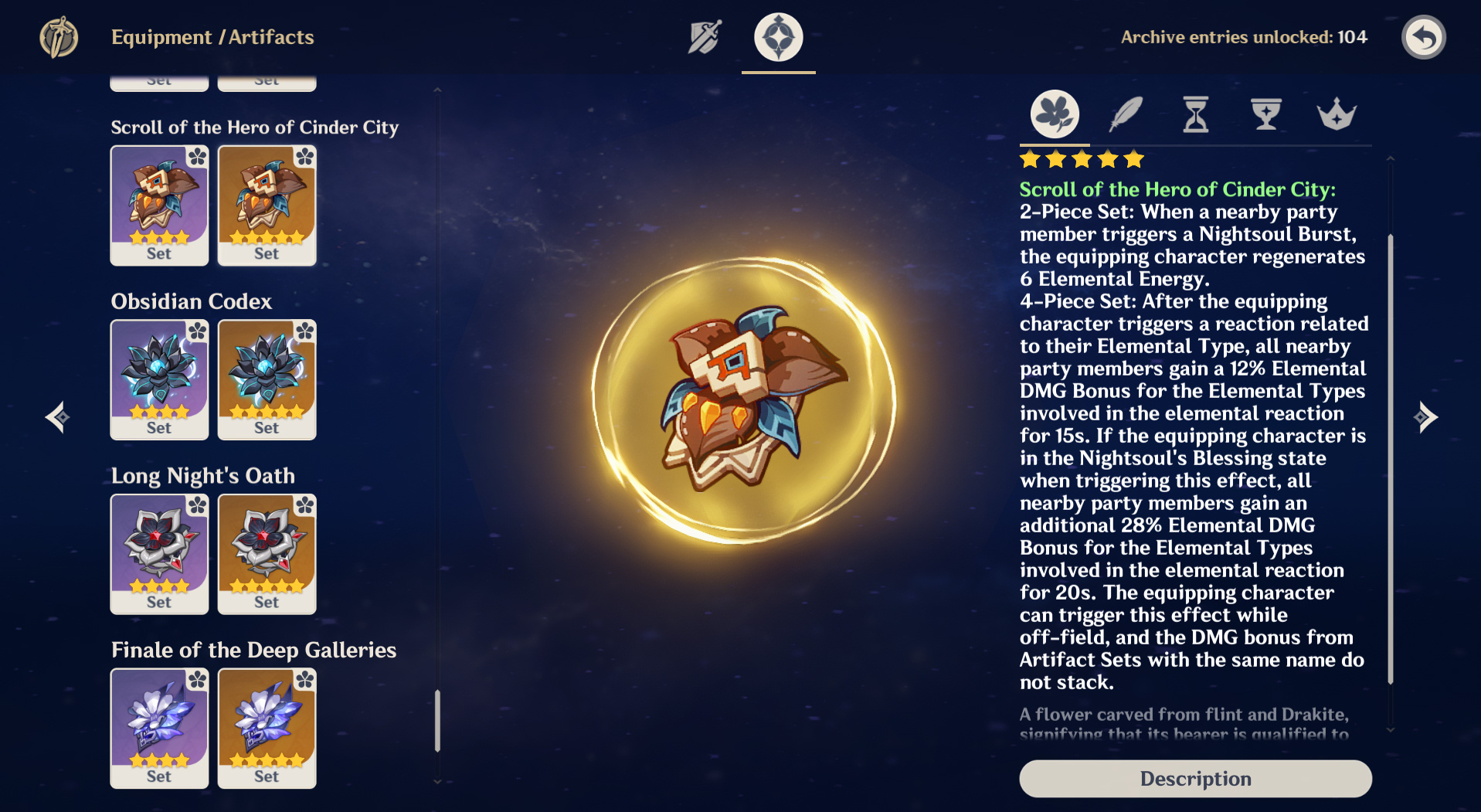
And that is considering that Genshin Impact has continued its course with the lore expanding in width instead of depths – ancient dragon civilizations using AI, everything related to the Night Kingdom, Capitano’s up-till-then unmentioned special heart, the primal element Phlogiston that was also not mentioned before, Traveler’s spaceship, random high-tech scattered around, Ode of Resurrection, etc. – while the previous regions remain more or less dead as the adventure continues.
Admittedly, it was during the second half of Natlan that HoYoverse started to course-correct. Three of the other nation’s events suddenly weren’t just a match 3 or inconsequential in terms of lore, Inazuma’s Mikawa Flower Festival, Mondstadt’s Paralogism and Liyue’s latest Lantern Rite actually had important lore and were incredible to play.
The game also introduced Traveler’s Tales, the Anecdotes that allowed you to run into playable characters just going around their business in the open world. It started off as a limited-time event but has since become an evergreen feature.
However, these efforts really paid off as Nod-Krai released, so let’s take a look at what had been introduced with Version Luna I.
Unlike the mostly isolated regions of yore, Nod-Krai is a hodge-podge of cultures and races, a so-called paradise for adventurers. Going through the hub of Nasha Town, you’re as likely to run into a Sumeru merchant as you are into a local worker or even a Natlan tourist.
Coupled with the expanded Anecdotes system that lets you randomly run into familiar faces – say, Yanfei visiting the Frostmoon Scions, Heizou being the detective he is or Mika reporting to the Adventurers’ Guild – it makes the world feel much more connected and alive, shattering the feeling that life stops the second the Traveler moves to a different region.
The exploration also took a step back from characters’ powers and returned them to the world. Nod-Krai’s special power is the Kuuvahki, the moon power that we also didn’t hear about before. And while some characters do indeed wield it through their Moonwheels – what some of the local characters get instead of the usual Visions – that mastery shows itself in the new Lunar reactions instead of giving you any advantage in world exploration.
As such, it feels that the world had been designed with baseline mobility in mind, not being nearly as much of a pain as Natlan to explore. Some puzzles are a bit trickier than others, but usually there’s a helpful Kuuhenki hiding somewhere nearby that allows you to temporarily wield Kuuvahki yourself and complete exploration activities.
That is already enough to rank Nod-Krai higher than Natlan in my personal list.
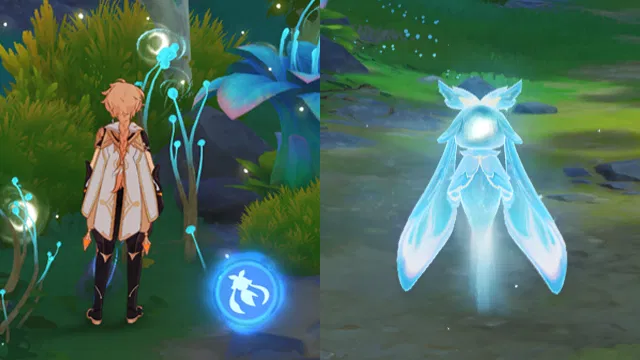
The story goes like this: Mavuika suggests the Traveler check out Nod-Krai, as it is a land filled with ancient power and one that attracted the attention of the certain Fatui Doctor. Shortly after that, the Traveler goes on a time-warping adventure with Direidyth, a young woman from Khaenri’ah, and learns new details about their Twin and the up-till-then unmentioned Spaceship.
And if that wasn’t enough, an ancient Dragon Sovereign AI turned robotic maid personally delivers an invitation from one and only Varka, the Grand Magister of Favonius, to visit Nod-Krai… that just so happens to be the place where the Traveler first arrived in Teyvat and crashed the previously (un)mentioned Spaceship.
Nod-Krai itself is an autonomous borderlands region that sits next to Snezhnaya. It has a deep connection to the Three Moons that once shone on Teyvat, though only one remains now. It was also one of the first locations to be attacked by the Abyss during the Cataclysm, with a unique phenomenon called The Wild Hunt, a noticeably stronger presence of the Abyss compared to other regions besides maybe Natlan.
The Traveler simply seeks to find their lost – or hidden – spaceship but gets sucked into a literally cosmic scale intrigue. To find the location of the craft, our hero seeks the help of the Frostmoon Scions, which also puts them at odds with the Fatui, which… won’t be the first time. However, a series of coincidences also crosses the Traveler’s path with the Moon Maiden, who just happens to be the (previously) Third of the Fatui Harbingers, Columbina, and the mastermind behind The Wild Hunt, one of the five Great Sinners of Khaenri’ah – Rerir, the Racher of Solnari.
Despite being a bit heavy-handed on the “coincidences” part, the plot had been genuinely enjoyable. The participating characters all have their role to play, and the Traveler manages to strike a balance between being useless and being overpowered so much they could solo Rerir.
Additionally, the plot is finally expanding in depth, not only in width. With the unraveling story, we’re likely to learn more about the Three Moons (and possibly the fake sky), the Traveler’s mysterious spaceship (which would also give more story to the Abyss Twin), the Five Great Sinners and Khaenri’ah, Fatui Harbingers, Snezhnaya, and more. Hopefully, we can avoid any more “Spaceships that were never mentioned, but that were totally there since the beginning” though.
Who knows, perhaps the developers would let us return to some of the other regions and pick up some of their storylines – Venti’s Archon Quest Part 2, Dornman Port, Blackcliff Forge, perhaps the Youkai of Inazuma… Hey, a girl can dream!
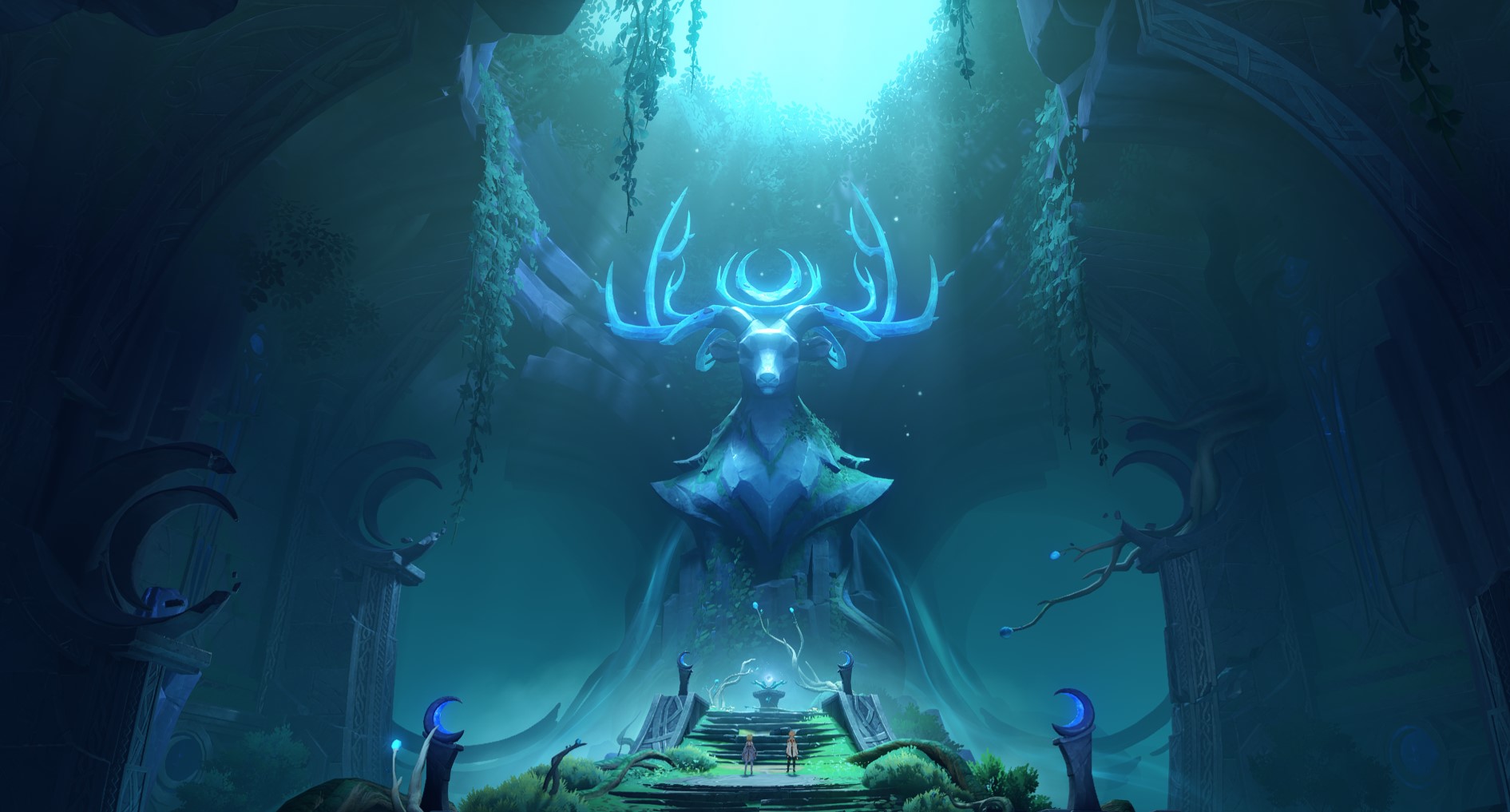
In terms of gameplay and combat, Nod-Krai introduced a new Lunar family of reactions, so far available in the Lunar Charged (Ineffa, Flins) and Lunar Bloom (Lauma, Nefer) variations. While they can buff older teams – such as Lauma bringing the Nilou Bloom back into the meta for a bit – ultimately, you’re looking at completely new comps consisting of multiple new characters.
If we’re lucky, HoYo will release more 4-stars like Aino (Hydro Claymore) to reduce the overall number of limited 5-stars you have to pull to make them work.
Additionally, Nod-Krai is following in Natlan’s footsteps when it comes to the exclusivity of the gear and the mechanics. The game’s new mechanic, Moonsign, rewards running multiple Nod-Krai characters by providing extra stats and bonuses thanks to the Ascendant Gleam. Not only that, but the artifacts have also taken a step forward in a similar direction, giving different bonuses based on your Moonsign status.
At the moment, open-world content and even the Abyss can be completed without using Nod-Krai characters at all, but the direction itself is alarming. After all, the powercreep also doesn’t ramp up in the first or the second patch of the expansion – Luna III and IV is where it will be seen how much the new mechanics and gear affect the general health of the game.
Just you wait until some of the Lunar-reaction bosses like the current Abyss’s Lightkeeper make it to the harder difficulties of the Abyss, the Theater and the Onslaught.
On the other hand, Genshin also introduced a brand-new system: “To Temper Thyself and Journey Far”. By consuming resin and doing dailies 5 days out of 7, Travelers can unlock one free Constellation for Standard and select limited characters, limited by 4 a year total.
Considering that unlike its younger siblings, ZZZ & HSR, Genshin is not buffing the older characters just yet, it is a great system to keep them afloat somewhat. If you were going to go for, say, Wanderer C2 but couldn’t afford the cost, now it would mean a total of one less Constellation to pull for.
It’s worth noting that the limited characters only include those of up to (and including) Sumeru, but also exclude some of the stronger and more valuable picks: Kazuha, Yelan, and Alhaitham.
Still, it cannot be denied that the overall power level of Travelers will grow stronger with this system, but it remains to be seen where it goes in the future.
And that’s how things are with Nod-Krai at large: currently, it is a momentous effort to turn things around after Natlan, but the real impact of the changes will be seen over the upcoming Versions. Note that Version Luna II is available already!


